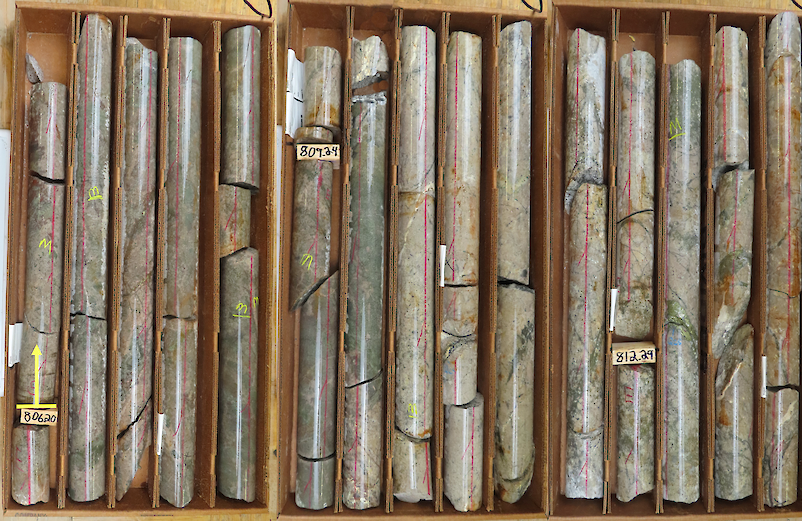Gold Market Report
Source: Ben Traynor, BullionVault (9/16/11)
"Gold continues a slight fall that began after key central banks announced they will begin USD liquidity operations."
U.S. dollar gold bullion rallied to $1,789 an ounce Friday morning London time—down 3.6% from last week's close—following a sharp fall that began the previous day after key central banks announced they will begin USD liquidity operations.
Silver bullion gained 1.9% from Friday morning's low to hit $40.20 per ounce by lunchtime—though this still represents a 2.9% drop for the week.
Banking stocks were among Friday morning's biggest gainers as European equity markets continued the rally they began on Tuesday.
Earlier on Friday, gold bullion continued the previous day's decline during Asian trading, hitting a low of $1764 per ounce—5% down on last week's close.
The last time gold fell more than 5% in a week—based on Friday-to-Friday PM London Fix prices—was in December 2009.
"Liquidation is still the order of the day," reported one gold bullion trader in Hong Kong.
"A pretty strong stomach might be required short-term," adds Ole Hansen, senior manager at Saxo Bank.
"I think the market will go higher, but a $100-plus correction cannot be ruled out, especially if the Dollar decides to strengthen even further."
The Dollar index—which measures the Dollar against a basket of other currencies—is up 3.4% since the start of the month.
The European Central Bank—in co-ordination with the US Federal Reserve, the Bank of England, the Bank of Japan and the Swiss National Bank—will "conduct three US Dollar liquidity-providing operations with a maturity of approximately three months" to distressed European banks, it announced Thursday.
"The ECB is trying to prevent things from getting out of hand...[it] is seeing the stress in the Dollar markets right now," says Benjamin Schroeder, Frankfurt-based rate strategist at Commerzbank.
Earlier this week French bank BNP Paribas had to deny rumors that it was unable to borrow Dollars from the credit markets.
The ECB, however, is "only really geared to put out spot fires and play brinkmanship," warns Sydney-based UBS analyst Tom Price, adding that the central bank is not capable of delivering the "killer package" that would solve the Eurozone debt crisis.
"In that environment, the problem drags on for years, not months, and it’s a great environment for gold."
"We have entered into a dangerous phase of the crisis," International Monetary Fund head Christine Lagarde said in a speech in Washington Thursday.
"[Policymakers] must regain the spirit of 2008".
That year saw the implementation of several new policies—including, in the US, the Troubled Asset Relief Program and the Fed's Term Asset-Backed Securities Loan Facility. Both of these programs sought to avert a crisis by using public money to buy—or, through loans, encourage others to buy—so-called toxic assets.
Since the collapse of Lehman Brothers in September 2008, the value of assets held on the Fed's balance has risen 233%, according to Fed data.
US Treasury secretary Tim Geithner will propose Friday that the €440 billion European Financial Stability Facility—the Eurozone's ad hoc bailout mechanism set up last year—use leverage to boost its bond-buying capacity, news agency Reuters reports.
The EFSF could stretch its resources "for example through the use of partial guarantees against first losses," explains Sony Kapoor, managing director of international policy institute Re-Define.
"One of the difficulties [however]," an EU official told Reuters," is that leverage may be seen as a potential liability...but [the proposal] deserves to be looked at in detail."
Worldwide scrap gold bullion supply is forecast to rise 2.3% by the end of the year—and will exceed jewelry fabrication demand for the first time since the start of 2009, according to precious metals consultancy Thomson Reuters GFMS, which published its Gold Survey 2011 Update 1 on Thursday.
East Asia and the Indian subcontinent were the only regions to show significant growth in jewelry fabrication demand in the first half of the year—with China and India accounting for the majority.
Much of this jewelry demand—especially in China—is actually a form of investment demand pointed out GFMS research director Neil Meader.
This means that, should investor sentiment turn against gold, "the cushion of a resilient jewelry sector may not be what it was".
Elsewhere in China, the world's second largest gold bullion market is set to become the latest country to get gold-dispensing ATMs, according to press reports on Friday.
The machines—which will be set up in nightclubs and private banks—will dispense 2.5 kilogram bars of gold bullion.
Ben Traynor
BullionVault
Gold value calculator | Buy gold online at live prices
Editor of Gold News, the analysis and investment research site from world-leading gold ownership service BullionVault, Ben Traynor was formerly editor of the Fleet Street Letter, the UK's longest-running investment letter. A Cambridge economics graduate, he is a professional writer and editor with a specialist interest in monetary economics.
(c) BullionVault 2011
Please Note: This article is to inform your thinking, not lead it. Only you can decide the best place for your money, and any decision you make will put your money at risk. Information or data included here may have already been overtaken by events—and must be verified elsewhere—should you choose to act on it.
Silver bullion gained 1.9% from Friday morning's low to hit $40.20 per ounce by lunchtime—though this still represents a 2.9% drop for the week.
Banking stocks were among Friday morning's biggest gainers as European equity markets continued the rally they began on Tuesday.
Earlier on Friday, gold bullion continued the previous day's decline during Asian trading, hitting a low of $1764 per ounce—5% down on last week's close.
The last time gold fell more than 5% in a week—based on Friday-to-Friday PM London Fix prices—was in December 2009.
"Liquidation is still the order of the day," reported one gold bullion trader in Hong Kong.
"A pretty strong stomach might be required short-term," adds Ole Hansen, senior manager at Saxo Bank.
"I think the market will go higher, but a $100-plus correction cannot be ruled out, especially if the Dollar decides to strengthen even further."
The Dollar index—which measures the Dollar against a basket of other currencies—is up 3.4% since the start of the month.
The European Central Bank—in co-ordination with the US Federal Reserve, the Bank of England, the Bank of Japan and the Swiss National Bank—will "conduct three US Dollar liquidity-providing operations with a maturity of approximately three months" to distressed European banks, it announced Thursday.
"The ECB is trying to prevent things from getting out of hand...[it] is seeing the stress in the Dollar markets right now," says Benjamin Schroeder, Frankfurt-based rate strategist at Commerzbank.
Earlier this week French bank BNP Paribas had to deny rumors that it was unable to borrow Dollars from the credit markets.
The ECB, however, is "only really geared to put out spot fires and play brinkmanship," warns Sydney-based UBS analyst Tom Price, adding that the central bank is not capable of delivering the "killer package" that would solve the Eurozone debt crisis.
"In that environment, the problem drags on for years, not months, and it’s a great environment for gold."
"We have entered into a dangerous phase of the crisis," International Monetary Fund head Christine Lagarde said in a speech in Washington Thursday.
"[Policymakers] must regain the spirit of 2008".
That year saw the implementation of several new policies—including, in the US, the Troubled Asset Relief Program and the Fed's Term Asset-Backed Securities Loan Facility. Both of these programs sought to avert a crisis by using public money to buy—or, through loans, encourage others to buy—so-called toxic assets.
Since the collapse of Lehman Brothers in September 2008, the value of assets held on the Fed's balance has risen 233%, according to Fed data.
US Treasury secretary Tim Geithner will propose Friday that the €440 billion European Financial Stability Facility—the Eurozone's ad hoc bailout mechanism set up last year—use leverage to boost its bond-buying capacity, news agency Reuters reports.
The EFSF could stretch its resources "for example through the use of partial guarantees against first losses," explains Sony Kapoor, managing director of international policy institute Re-Define.
"One of the difficulties [however]," an EU official told Reuters," is that leverage may be seen as a potential liability...but [the proposal] deserves to be looked at in detail."
Worldwide scrap gold bullion supply is forecast to rise 2.3% by the end of the year—and will exceed jewelry fabrication demand for the first time since the start of 2009, according to precious metals consultancy Thomson Reuters GFMS, which published its Gold Survey 2011 Update 1 on Thursday.
East Asia and the Indian subcontinent were the only regions to show significant growth in jewelry fabrication demand in the first half of the year—with China and India accounting for the majority.
Much of this jewelry demand—especially in China—is actually a form of investment demand pointed out GFMS research director Neil Meader.
This means that, should investor sentiment turn against gold, "the cushion of a resilient jewelry sector may not be what it was".
Elsewhere in China, the world's second largest gold bullion market is set to become the latest country to get gold-dispensing ATMs, according to press reports on Friday.
The machines—which will be set up in nightclubs and private banks—will dispense 2.5 kilogram bars of gold bullion.
Ben Traynor
BullionVault
Gold value calculator | Buy gold online at live prices
Editor of Gold News, the analysis and investment research site from world-leading gold ownership service BullionVault, Ben Traynor was formerly editor of the Fleet Street Letter, the UK's longest-running investment letter. A Cambridge economics graduate, he is a professional writer and editor with a specialist interest in monetary economics.
(c) BullionVault 2011
Please Note: This article is to inform your thinking, not lead it. Only you can decide the best place for your money, and any decision you make will put your money at risk. Information or data included here may have already been overtaken by events—and must be verified elsewhere—should you choose to act on it.



































